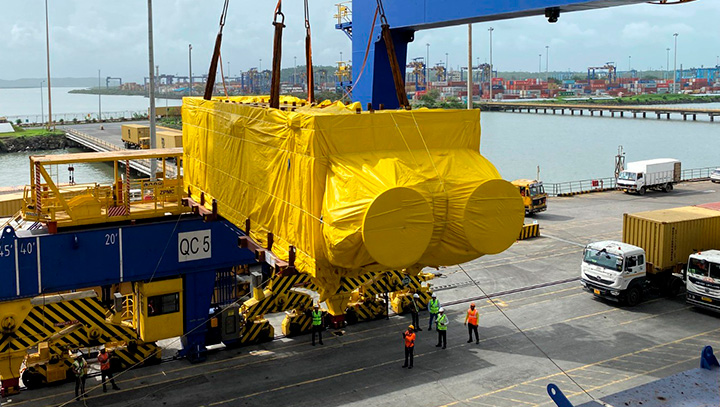Provisional agreement on more sustainable and resilient trans-European transport network brings Europe closer together

The European Commission welcomes the political agreement reached last night between the European Parliament and the Council on the regulation underpinning the trans-European transport network (TEN-T). The co-legislators agreed to significantly step up efforts to build a sustainable and resilient TEN-T. This includes strong incentives to increase the use of more sustainable forms of transport, and to improve multimodality – the practice of combining transport modes for a single journey – within the European transport system.
Agreed vision for European transport infrastructure
The revised TEN-T will set mandatory targets:
- Passenger railway lines on the TEN-T core and extended core network shall allow trains to travel at 160 km/h or faster by 2040.
- The European Rail Traffic Management System (ERTMS) must be rolled out on the entire TEN-T network as the single European signalling system in Europe to make rail safer and more efficient. Consequently, national legacy ‘class B’ systems must be decommissioned progressively; this will incentivise European industry to invest in ERTMS.
- Safe and secure parking areas shall be developed on the core and extended core road network of the TEN-T by 2040, on average every 150 km. This is key to assuring safety and appropriate working conditions for professional drivers.
- Major airports, dealing with more than 12 million passengers annually, will have to be connected by long-distance rail, a major step towards improving connectivity and accessibility for passengers and strengthening the competitiveness of rail vis-a-vis domestic flights.
- The number of transhipment terminals must develop in line with the current and expected traffic flows and the needs of the sector. Equally handling capacity at freight terminals must improve. This, as well as allowing the circulation of 740m trains across the network, will help shift more freight onto more sustainable transport modes and give a push to Europe’s combined transport sector (the use of combinations such as rail-road to move freight).
- All 430 major cities along the TEN-T network will have to develop Sustainable Urban Mobility Plans to promote zero and low emission mobility.
- The European Maritime Space aims to integrate the maritime space with other transport modes efficiently, viably and sustainably. For this purpose, short-sea shipping routes will be upgraded and new ones will be created, while maritime ports will be further developed as well as their hinterland connections.
In addition, transport links with neighbouring third countries will be improved by integrating Ukraine, Moldova as well as the six Western Balkan partners into the newly established European Transport Corridors.
To assure the timely completion of the network – by 2030 for the core network, 2040 for the extended core network, and 2050 for the comprehensive network – this agreement also includes better governance, with for instance implementing acts for the main cross-border sections and other specific national sections along the nine European Transport Corridors. This, together with greater alignment between national transport and investment plans and TEN-T objectives, will ensure coherence when priorities are set for infrastructure and investment.
Next steps
The political agreement reached last night must now be adopted formally. Once this process is completed by the European Parliament and the Council, the new rules will be published in the Official Journal of the European Union and enter into force 20 days later.
The launch of the new TEN-T and its nine new European Transport Corridors will be a key theme at Connecting Europe Days in Brussels from 2 to 5 April 2024, Europe’s flagship mobility event.
Background
The revised TEN-T Regulation is part of the European Green Deal, the EU's long-term growth strategy to make the EU climate-neutral by 2050.
Denmark announces alliance on green fuels in India
- Jan 19, 2024
Submit News :
Warning: Undefined variable $alert_status in /home/u451255182/domains/freightcargonetwork.com/public_html/assets/common-includes/footer.php on line 306
Warning: Undefined variable $failed_status in /home/u451255182/domains/freightcargonetwork.com/public_html/assets/common-includes/footer.php on line 313






